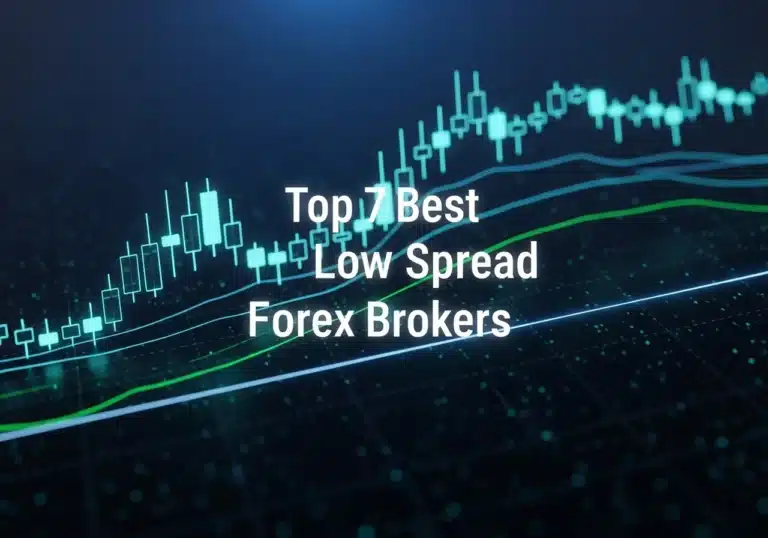The primary role of central banks in the forex market is to manage their national currency, control the money supply, and implement monetary policy to achieve economic stability and growth. They act as the ultimate authority in the financial system, influencing currency values through direct intervention, interest rate adjustments, and policy announcements. Understanding their actions is critical for any serious participant in the forex market, from individual traders to large institutions. This guide explores exactly how they exert their immense influence and what it means for you.
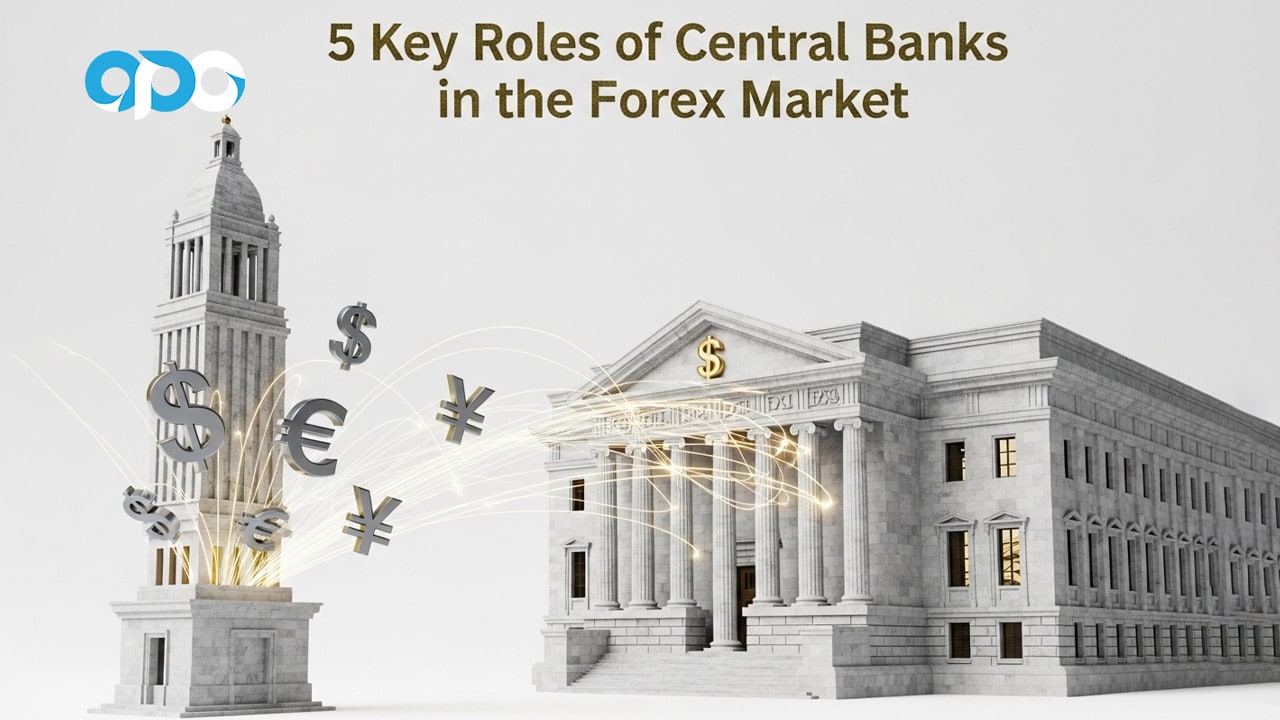
Key Takeaways
- Primary Mandate: Central banks prioritize price stability (controlling inflation), sustainable economic growth, and the stability of the entire financial system.
- Methods of Influence: Their influence is exerted through three main channels: direct intervention (buying/selling currency), indirect intervention (monetary policy like interest rates), and verbal intervention (speeches and statements).
- Interest Rates are King: The single most powerful tool for influencing long-term currency value is the adjustment of benchmark interest rates. Higher rates typically attract foreign capital, strengthening the currency.
- Trader Impact: Central bank actions are a primary source of both short-term volatility and long-term trend shifts in the forex market, creating significant risks and opportunities for traders.
- Strategic Trading: Successful trading around central bank activity requires mastering the economic calendar, identifying diverging monetary policies between nations, and implementing strict risk management.
What is a Central Bank’s Primary Mandate?
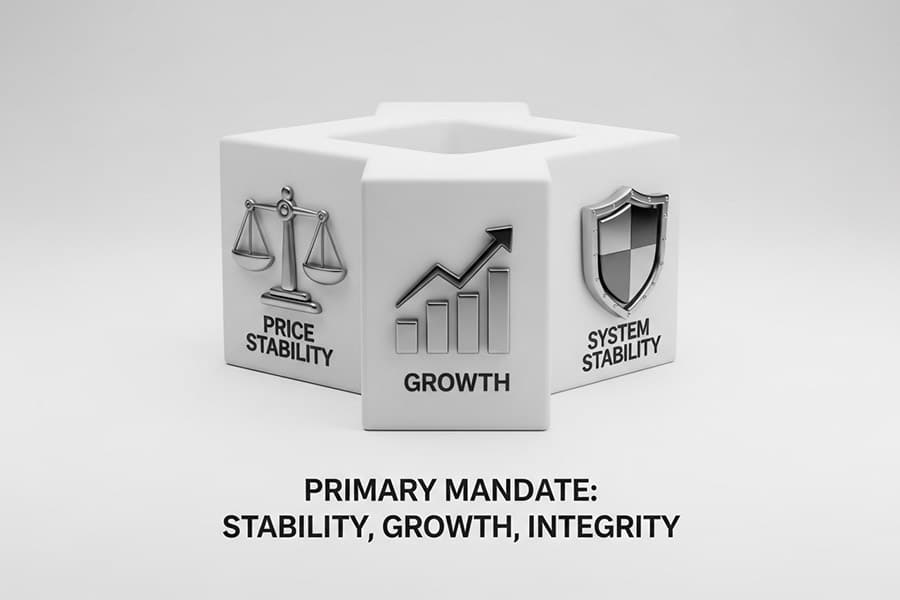
Before diving into the forex market, it’s essential to understand what a central bank is fundamentally designed to do. They aren’t profit-driven entities like commercial banks. Instead, they are quasi-governmental institutions tasked with overseeing the monetary health of a nation. While the specifics can vary slightly from country to country, their core mandates almost universally revolve around three pillars: maintaining price stability by controlling inflation, fostering maximum employment and sustainable economic growth, and ensuring the overall stability and integrity of the financial system. The role of central banks in the forex market is a direct extension of these core responsibilities, as the value of a nation’s currency is intrinsically linked to its economic health.
Why Central Banks Intervene in Forex Markets
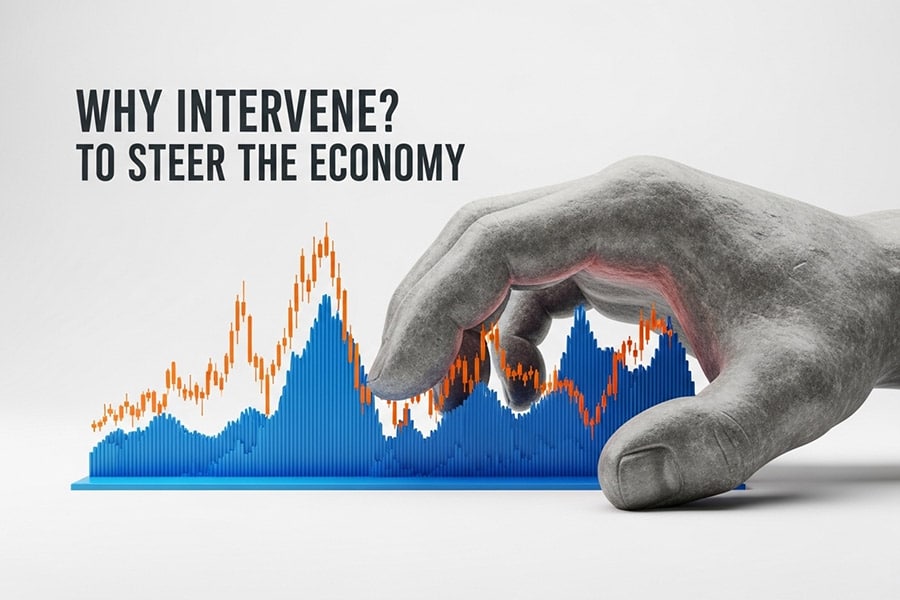
A central bank doesn’t just wake up and decide to meddle in the world’s largest financial market for no reason. Every action is a calculated move designed to steer the national economy toward its mandated goals. Intervention in the foreign exchange market is a powerful, though not always frequent, tool used to achieve specific economic outcomes. These actions can range from subtle hints in a speech to multi-billion dollar transactions. Let’s explore the primary motivations behind these interventions.
To Control Inflation & Deflation
Inflation control is arguably the most critical function. A currency that is too weak can lead to imported inflation, as the cost of foreign goods and raw materials rises. By intervening to strengthen the currency, a central bank can make imports cheaper and help tame domestic price pressures. Conversely, if an economy is facing deflation (falling prices), a central bank might intervene to weaken its currency. A cheaper currency makes exports more attractive to foreign buyers, stimulating economic activity and pushing prices upward.
To Stabilize the National Currency
Extreme volatility is the enemy of economic stability. A currency that swings wildly in value creates uncertainty for businesses involved in international trade and for foreign investors. If a currency is depreciating too rapidly (a “freefall”), it can trigger a crisis of confidence. A central bank will step in to buy its own currency on the open market to support its value and restore order. Similarly, if a currency is appreciating too quickly, it can harm the nation’s export sector. In this scenario, the bank would sell its own currency to curb the rapid rise, a key aspect of the role of central banks in the forex market.
To Manage Economic Growth (Exports/Imports)
The exchange rate is a direct lever on a country’s trade balance. A weaker national currency makes a country’s exports cheaper and more competitive on the global stage, while making imports more expensive for domestic consumers. This can stimulate domestic industries and boost GDP. A stronger currency has the opposite effect, making exports more expensive and imports cheaper. Central banks often walk a tightrope, trying to find a “goldilocks” level for their currency that supports exporters without excessively punishing importers or consumers through inflation.
To Maintain Adequate Foreign Reserves
Central banks hold reserves of foreign currencies (like the U.S. dollar, euro, and yen) and gold. These reserves are a crucial part of a nation’s financial safety net. They are used to back domestic liabilities, pay for imports, and, most importantly for this discussion, to conduct interventions in the forex market. A central bank might periodically enter the market to buy or sell foreign currencies simply to adjust the composition of its reserves or to increase them during favorable market conditions. This ensures they have the firepower needed for future interventions.
Read More: The Role of Central Bank in Forex Trading
Direct Intervention: The Most Powerful Tool
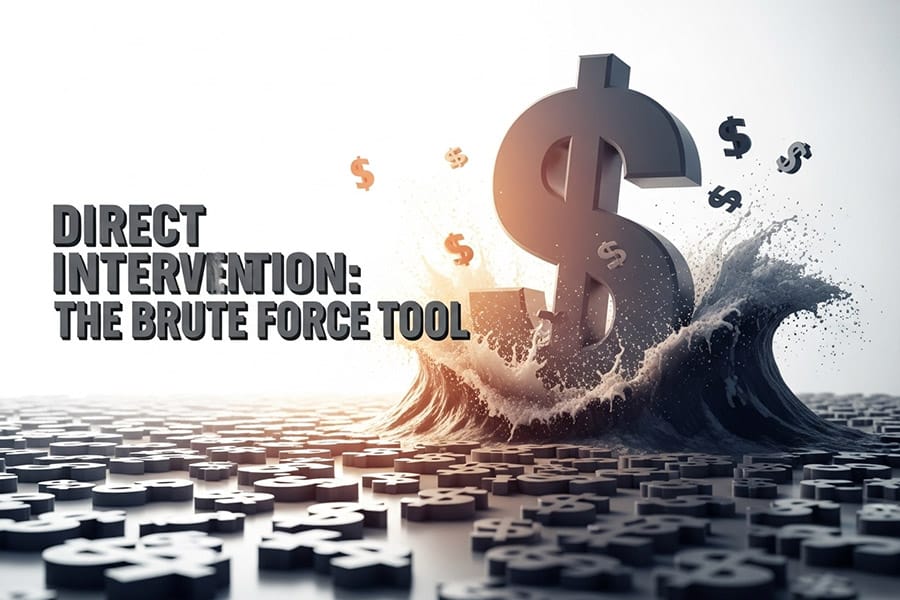
When a central bank wants to make an immediate and forceful impact on its currency’s value, it uses direct intervention. This involves physically entering the forex market and buying or selling its own currency against foreign currencies. This is the most overt demonstration of the role of central banks in the forex market. Because central banks can transact in volumes far exceeding almost any other market participant, these actions can cause sharp, sudden price movements. There are two main ways they go about this.
How Sterilized Intervention Works
Sterilized intervention is a sophisticated, two-step process. In step one, the central bank intervenes directly in the forex market (e.g., it buys its own currency to strengthen it). However, this action affects the domestic money supply. To counteract, or “sterilize,” this effect, the bank performs a second transaction in the domestic bond market. For instance, if it bought its currency (which removes cash from the system), it will simultaneously buy government bonds, which injects that cash right back into the system. The net effect is that the exchange rate is influenced without changing the domestic money supply or interest rates. This is a targeted approach aimed solely at the currency’s value.
How Unsterilized Intervention Works
Unsterilized intervention is a more blunt instrument. The central bank simply performs the first step: it buys or sells its currency on the forex market and allows that action to directly impact the domestic money supply. For example, if the Bank of Japan sells Japanese Yen to weaken it, this increases the supply of Yen in the financial system. This increase in supply not only directly devalues the Yen but can also lead to lower domestic interest rates, further reinforcing the currency’s weakness. Because it affects both the exchange rate and monetary policy, its impact is often more profound and lasting than sterilized intervention.
Real-World Example: The Swiss National Bank (SNB)
One of the most dramatic examples of direct intervention occurred on January 15, 2015. For years, the Swiss National Bank (SNB) had maintained a “peg,” or a minimum exchange rate, of 1.20 francs per euro to prevent the Swiss franc from becoming too strong and hurting Switzerland’s export-driven economy. They achieved this by continuously selling francs and buying euros. On that fateful day, without warning, they abandoned the peg.
The market was flooded with buy orders for the franc as the SNB’s artificial ceiling was removed. The EUR/CHF currency pair plummeted over 30% in minutes, wiping out fortunes and causing several forex brokers to go insolvent. It was a stark and brutal lesson in the absolute power central banks wield and the immense volatility they can unleash.
Indirect Intervention: Monetary Policy’s Impact
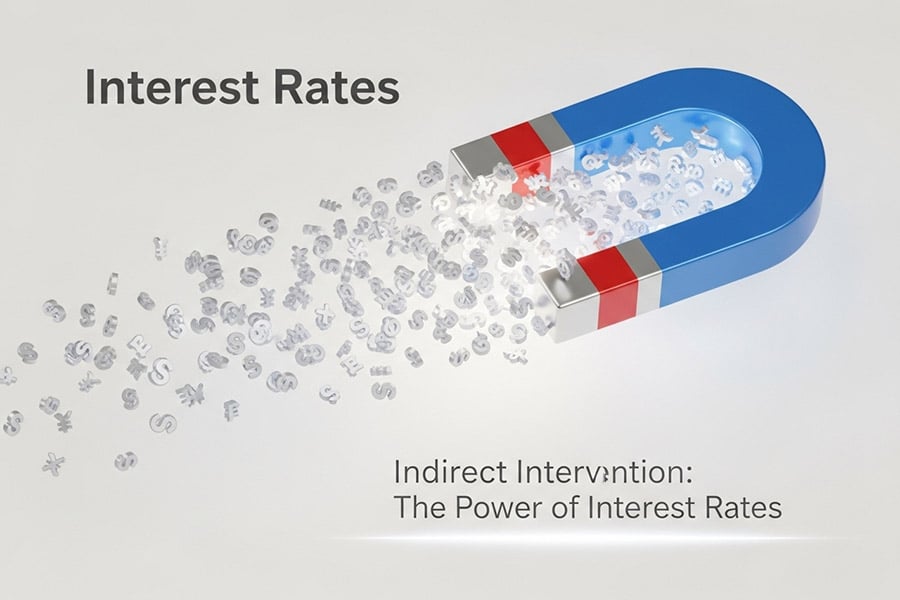
While direct intervention is dramatic, the most consistent and powerful influence central banks have is indirect, exerted through the tools of monetary policy. These decisions, made by committees like the Federal Open Market Committee (FOMC) in the U.S., create the underlying economic conditions that drive long-term currency trends. For forex traders, understanding monetary policy isn’t just an option; it’s the foundation of fundamental analysis. The impact of monetary policy on the forex market is a cornerstone of professional trading.
Interest Rates: The Prime Mover of Currency Value
This is the big one. The benchmark interest rate set by a central bank is the rate at which commercial banks can borrow money. It influences all other rates in the economy, from mortgages to savings accounts. For forex markets, interest rates are a magnet for global capital. A country with a higher interest rate offers a better return for investors holding that currency.
Consequently, when a central bank raises its interest rate, international investors are incentivized to buy that country’s currency to invest in its bonds and other assets, driving up the currency’s value. The direct correlation is simple: higher rates generally equal a stronger currency, and vice versa. This is why a central bank rate decision is one of the most-watched events on any economic calendar.
Quantitative Easing (QE) & Tightening (QT)
In times of crisis or low growth, when cutting interest rates to zero isn’t enough, central banks can turn to Quantitative Easing (QE). This involves the central bank “printing” new money to buy financial assets (usually government bonds) from commercial banks. This floods the financial system with cash, pushing down long-term interest rates and encouraging lending and investment. However, this massive increase in the money supply fundamentally devalues the currency. Think of it as diluting its value. The opposite is Quantitative Tightening (QT), where the central bank sells off the assets on its balance sheet or lets them mature without reinvesting. This removes money from the system, effectively reducing the currency supply and potentially strengthening its value.
Open Market Operations (OMOs)
This is the day-to-day tool central banks use to manage the money supply and keep the benchmark interest rate on target. OMOs involve the buying and selling of short-term government securities on the open market. To increase the money supply and nudge rates down, the central bank buys securities from commercial banks, crediting their accounts with fresh cash. To decrease the money supply and push rates up, it sells securities, pulling cash out of the banking system. While less dramatic than a formal rate hike, daily OMOs are a key part of the ongoing role of central banks in the forex market.
Reserve Requirements for Commercial Banks
A central bank can also mandate the minimum amount of cash (reserves) that commercial banks must hold and cannot lend out. By lowering the reserve requirement, the central bank frees up more cash for banks to lend, which increases the overall money supply and stimulates the economy. By raising the reserve requirement, it restricts the amount of money available for lending, tightening credit conditions and slowing the economy. While this tool is used less frequently than interest rates or OMOs, it remains a powerful way to indirectly influence economic activity and, by extension, currency value.
Read More: How Interest Rates Affect Forex Market
Verbal Intervention: The Power of “Jawboning”
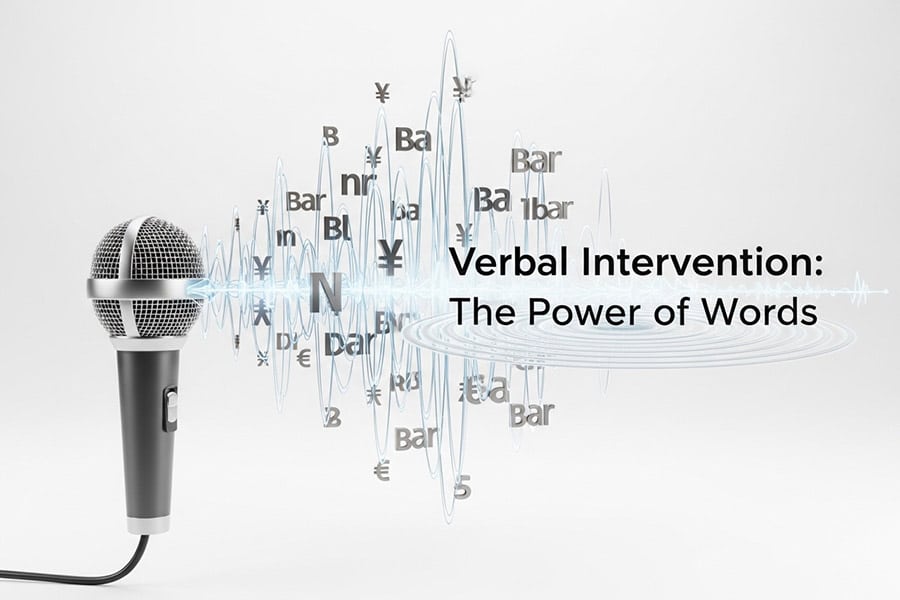
Sometimes, a central bank doesn’t need to spend a single dollar or adjust a policy to move the market. The mere words of a central bank governor or a published policy statement can send currency pairs soaring or tumbling. This is known as “verbal intervention” or “jawboning.” Forex markets are forward-looking, constantly trying to price in future events.
Traders hang on every word from top central bankers, parsing their speeches for clues about future monetary policy. A hawkish tone (hinting at future rate hikes) can strengthen a currency, while a dovish tone (suggesting potential rate cuts) can weaken it, often long before any actual policy change occurs. This is one of the most nuanced aspects of the role of central banks in the forex market.
How Central Banker Speeches Move Markets
When a central bank governor like the Chair of the Federal Reserve or the President of the European Central Bank speaks, they aren’t just sharing their thoughts. They are deliberately signaling the bank’s intentions to the market. A speech might be used to “test the waters” for a future policy change or to manage market expectations.
If a currency is seen as too strong, a governor might make comments expressing concern about its impact on exports. Traders will often react instantly, selling the currency on the assumption that the bank is leaning towards action. From my own experience, I’ve seen markets move more on a single unexpected word in a press conference than on the actual rate decision that preceded it.
Analyzing FOMC, ECB, and BOJ Statements
The official statements released after policy meetings are a goldmine of information. Traders and algorithms scrutinize these documents, comparing them to previous versions to spot subtle changes in language. For the U.S. Federal Open Market Committee (FOMC), did they describe economic growth as “solid” instead of “moderate”? For the European Central Bank (ECB), did they mention “downside risks” more or less frequently? For the Bank of Japan (BOJ), is there any change in their commitment to yield curve control? These seemingly minor linguistic shifts can signal a major change in the bank’s outlook and are powerful drivers of currency movements.
The Impact of Central Banks on Forex Traders
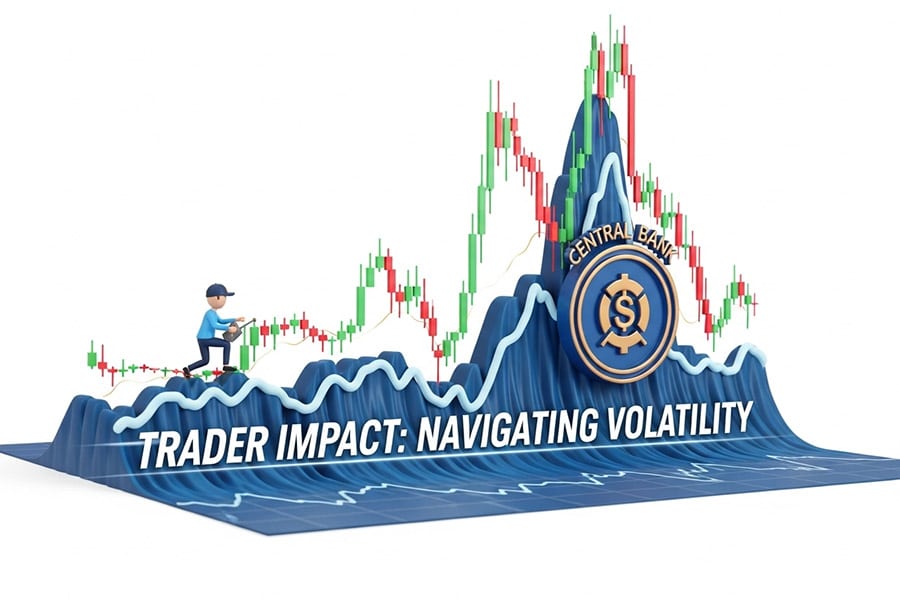
For a forex trader, central banks are not just a background element; they are the main characters on the economic stage. Their actions and communications are the primary drivers of market sentiment and direction. Ignoring them is like sailing without a weather forecast. The role of central banks in the forex market directly translates into both the biggest opportunities and the most significant risks a trader will face. A deep understanding of their influence is what separates consistently profitable traders from those who are constantly caught off guard.
Creating Short-Term Volatility
Scheduled events like interest rate announcements, press conferences, and the release of meeting minutes are hotspots for volatility. In the moments surrounding these releases, liquidity can dry up and spreads can widen as major players pull back to assess the new information. This can lead to “slippage,” where orders are filled at a worse price than expected. However, this volatility also presents opportunities for short-term strategies like news trading, where traders aim to profit from the initial, sharp price swing that follows a surprising announcement.
Shifting Long-Term Market Trends
Beyond the daily noise, the overarching policy stance of a central bank sets the long-term trend for its currency. A central bank that has entered a “hiking cycle” (a series of interest rate increases) will likely see its currency appreciate over many months or even years. Conversely, a bank in an “easing cycle” will see its currency trend downwards. Professional traders and hedge funds build their core positions around these long-term policy cycles, making them the most important fundamental driver in the forex market.
Trading Opportunities Around News Releases
The predictability of scheduled central bank announcements provides a framework for trading. Traders know when the FOMC statement will be released or when the BOE governor will speak. This allows them to prepare. They can analyze market expectations versus potential outcomes. For example, if the market expects a 0.25% rate hike but the central bank delivers a 0.50% hike (a “hawkish surprise”), the currency is likely to rally strongly. If they fail to hike at all (a “dovish surprise”), the currency will likely fall. This game of expectations is central to trading central bank actions.
Read More: How does forex affect economy
How to Trade Central Bank Actions
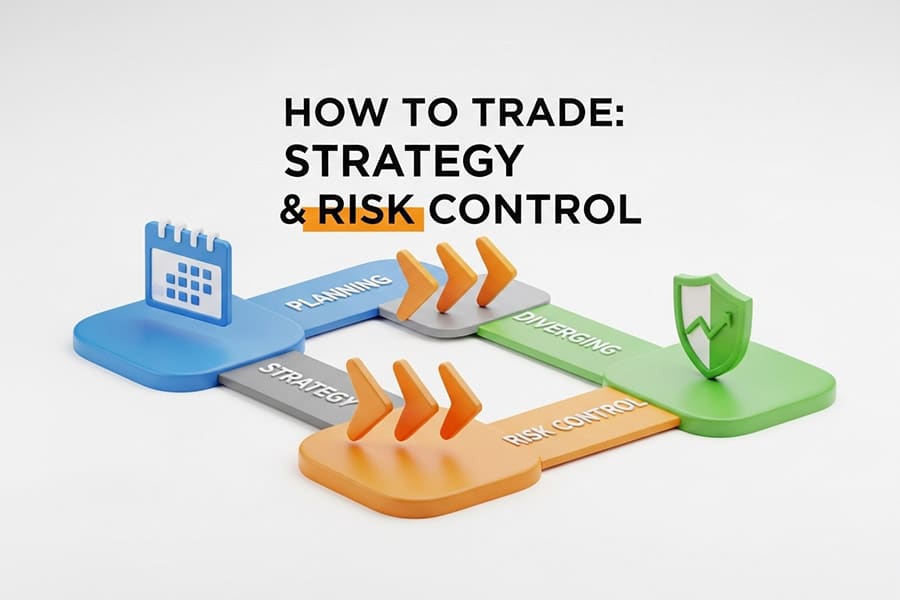
Theoretically understanding the role of central banks in the forex market is one thing; putting that knowledge into practice is another. Trading these events requires a specific skillset that combines fundamental analysis, technical timing, and robust risk management. It’s not about gambling on an announcement but about making informed decisions based on probabilities and managing your exposure when you’re wrong. Here are some actionable strategies that I’ve found essential in navigating these volatile periods.
Mastering the Economic Calendar
Your economic calendar is your best friend. It lists all upcoming central bank meetings, speeches, and minutes releases for every major economy. You must know these dates inside and out. Don’t just look at the event name; understand what it means. Know the difference between a rate decision, meeting minutes, and a governor’s speech. Before a key event, note the market consensus or forecast. This forecast is your baseline; the trading opportunity often lies in the deviation from this consensus.
Identifying Divergence in Monetary Policies
This is one of the most powerful trading strategies in forex. A currency’s value is always relative to another. The best trends often emerge when the monetary policies of two countries are moving in opposite directions (diverging). For instance, if the U.S. Federal Reserve is raising interest rates to combat inflation (a hawkish stance) while the Bank of Japan is keeping rates at zero to stimulate its economy (a dovish stance), it creates a powerful fundamental reason to be long USD/JPY. Identifying these divergences is key to positioning for long-term trends.
Risk Management During Intervention Periods
This cannot be overstated. Central bank events are “high-risk.” Volatility can spike, and prices can move against you with terrifying speed. Never trade these events without a stop-loss order in place. Consider reducing your normal position size to account for the increased volatility. It’s often prudent to avoid holding a position right through the announcement itself, instead waiting for the dust to settle and trading the subsequent trend. A surprise like the SNB event in 2015 is a potent reminder that “black swan” events happen, and capital preservation must always be your top priority.
The Evolving Role in a Digital Age
The fundamental role of central banks in the forex market is now facing a new frontier: the digital age. The rise of cryptocurrencies and the exploration of Central Bank Digital Currencies (CBDCs) are poised to reshape the financial landscape. A CBDC is a digital form of a country’s fiat currency that is a direct liability of the central bank. Unlike physical cash, it would be programmable and traceable. While still in exploratory phases in most countries, the introduction of CBDCs could profoundly change how monetary policy is implemented and how cross-border payments are settled, potentially altering the very mechanics of the forex market in the decades to come.
Opofinance Services
For traders looking to act on the market movements caused by central banks, having the right broker is paramount. Opofinance, an ASIC-regulated broker, provides the tools necessary for modern trading.
- Advanced Trading Platforms: Choose from industry standards like MT4 and MT5, or explore the advanced features of cTrader and the user-friendly OpoTrade platform.
- Innovative AI Tools: Gain a competitive edge with tools like the AI Market Analyzer, an AI Coach for strategy development, and AI-powered support.
- Secure & Flexible Transactions: Benefit from safe and convenient deposit and withdrawal methods, including crypto payments, with the advantage of zero fees from Opofinance.
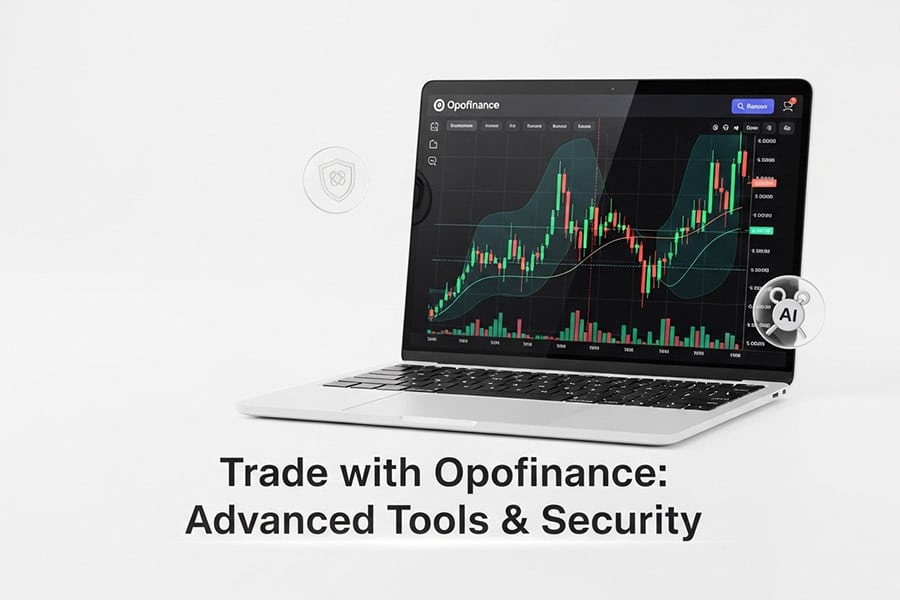
Explore a smarter way to trade central bank activity by leveraging these cutting-edge tools. Open an account today!
Conclusion: Key Takeaways for Forex Traders
In essence, central banks are the conductors of the global economy, and their actions reverberate directly through the forex market. The role of central banks in the forex market is multifaceted, ranging from the brute force of direct intervention to the subtle influence of monetary policy and verbal guidance. For forex traders, these institutions are not a passive variable but the most critical fundamental driver. By understanding their mandates, anticipating their actions through careful analysis, and applying disciplined risk management, a trader can transform the volatility created by central banks from a threat into a consistent source of opportunity, navigating the market with confidence and strategic foresight.
How often do central banks intervene directly?
Direct intervention is relatively rare. Most central banks prefer to influence their currency through monetary policy and communication. Direct action is usually reserved for times of extreme volatility or when the currency has deviated significantly from its desired level, often occurring only a few times a year, if at all.
Which central bank is most influential?
The U.S. Federal Reserve (the Fed) is widely considered the most influential central bank. Because the U.S. dollar is the world’s primary reserve currency, the Fed’s monetary policy decisions have a ripple effect across the entire global financial system, impacting nearly every currency pair.
Can you predict central bank intervention?
Predicting the exact timing is nearly impossible and very risky. However, traders can anticipate periods when intervention is more likely. This usually happens when a currency reaches a historical high or low, when its rate of change becomes extremely rapid, or when central bank officials begin to verbally express strong dissatisfaction with the currency’s level.
What is the difference between direct and indirect intervention?
Direct intervention is when a central bank physically buys or sells its currency on the open forex market to immediately influence its price. Indirect intervention involves changing monetary policy tools, like interest rates or reserve requirements, which affect the broader economy and influence currency value over a longer period.
Why do central banks announce their decisions publicly?
Transparency is crucial for market stability and the effectiveness of monetary policy. By publicly announcing their decisions and the economic reasoning behind them, central banks manage market expectations, reduce uncertainty, and guide economic behavior. This communication helps ensure their policy actions have the desired effect on the economy.







